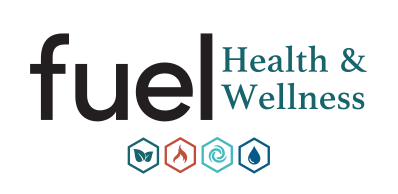What is fascia?
“Fascia is a sheath, a sheet, or any other dissectible aggregations of connective tissue that forms beneath the skin to attach, enclose, and separate muscles and other internal organs” (1,2)
How can fascia impact your body?
Fascia can restrict mobility if it becomes too tight, or bound up.
Tense fascia can occur for a variety of reasons, but your body can prevent you from going “all out” or pushing your speed in a way to protect itself if you do have tense fascia.
With impact from collision or repetitive forces the body’s natural response is thickening of the fascia. The thickened fascia becomes less mobile and less responsive to stretch. This can create compensatory patterns all throughout the body as the body adapts to areas not moving as well.
According to the book Fascial Stretch Therapy, “Fascia communicates with your body at three times the speed of your nervous system, so training your fascia is a necessity for optimal athletic function.”
When following fascial stretch technique you should utilize these top 10 principles for proper technique and to optimize the outcome.
- Synchronize breathing with stretching: There is a large connection between breathing and the tone in your muscles.
- Regulate your nervous system with stretching: upregulating for activity and downregulating for recovery.
- Stretch in the correct sequence: Order of stretching: stretch the joint, single joining muscles before stretching multi-joint muscles
- Stretch without pain: if you have pain then you are usually tearing healthy tissue to force flexibility. Most dramatically improved flexibility have been in calm relaxing environments. Need to avoid the rebound effect- tendency of muscle to tighten up right after stretch. “A stretch that is too deep or too long will elicit a tightening effect that is followed by soreness”
- Stretch fascia not just the muscle: “the brain activates function by way of movement patterns, and muscles are all connected by a fascial net.
- Stretch in multiple planes with movement: target stretching certain directions/muscles which are tighter.
- Expand joints when stretching: “ there are deep continuous paths of fascial tissue that connect the joint capsule to the ligament and the bone fascia.”
- Use traction for maximal lengthening:
- Use resistance when needed for optimal results: use of proprioceptive neuromuscular facilitation technique (PNF) takes advantage of neurological reflexes that enable the body to take advantage of opportunities to improve range of motion (ROM) and achieve longer- lasting flexibility from stretching than would otherwise be thought possible.
- Adjust parameters to match goals: “if you feel tight/sore then you want to emphasize frequency and duration over intensity. If you feel loose you will want to use a thorough but brief flexibility program so you can assess your body to ensure that all areas are indeed flexible.”
There are 5 key parameters to stretching: duration, intensity, tempo, and frequency. These need to be adjusted based on the goal of the stretch. Whether it’s to warm up for an activity, recover from training, recover from an injury, the parameters can all vary.
At Fuel Health and Wellness our fascial stretch practitioners will help identify the appropriate parameters, stretches and techniques for your goals.
You can set up a fascial stretch technique here or call/text us at 616-757-0932.
References:
1. Frederick A, Frederick C. Fascial Stretch Therapy. Edinburgh: Handspring Publishing; 2020.
2. Frederick A, Frederick C. Stretch to Win. Champaign, IL: Human Kinetics; 2017.


